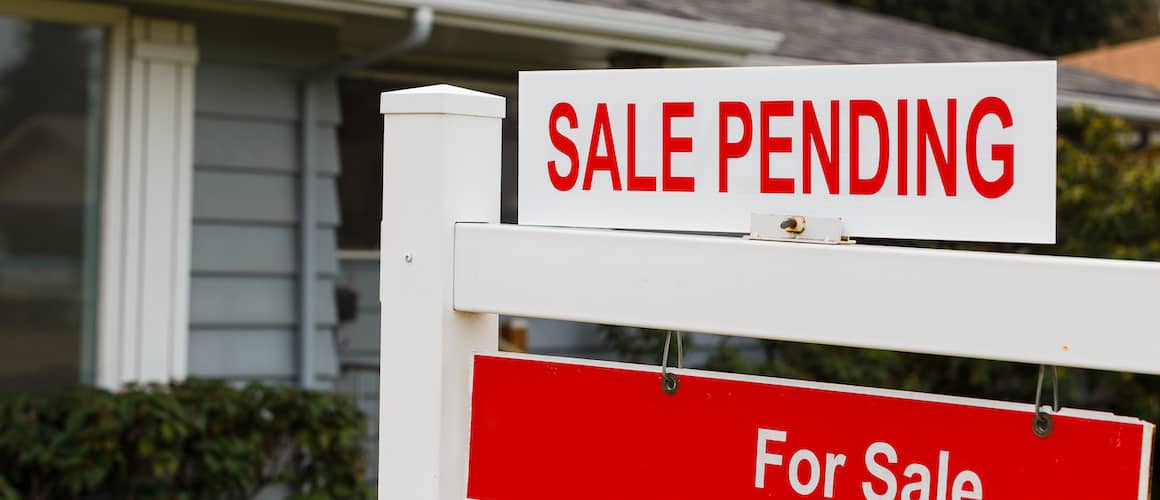8 Tips On What To Do Before Applying For A Mortgage

Preparing for a significant life event usually involves engaging in a series of well-thought-out steps. That can look like prepping for a job interview, training for a major sports event or planning each moment of a special date. You should take the same approach when applying for a mortgage. Buying a home is a significant event – and expense – that requires careful preparation.
Whether you’re a first-time home buyer or a repeat buyer, the mortgage application process follows similar steps. In this guide, we’ll outline what you need to do before applying for a mortgage, ensuring you’re well prepared for this important step in your homeownership journey.
What To Do Before Applying For A Mortgage
Preparation is key when applying for a mortgage. We’ve identified eight essential steps that can help streamline the financing process to purchase your first home.
1. Check Your Credit Report
The first step is to get a copy of your credit report.
Your credit report is a complete accounting of your credit history, including credit accounts, payment history and credit account status. Your credit score is a three-digit number that summarizes your history of managing debt. It’s calculated using scoring models that analyze the data in your credit report.
Errors in your credit report can hurt your credit score. Common errors include accounting mistakes and wrong names and addresses. If you come across any inaccuracies, it’s essential to address them ASAP.
2. Pay Off Debt
Lenders look at your debt-to-income ratio (DTI) to ensure you can comfortably make your mortgage payments. DTI represents the percentage of your gross monthly income allocated to paying off recurring debts, like student loans and car loans. Lenders typically require a DTI ratio below or equal to 43% of a borrower’s gross monthly income.
A popular way to lower your DTI and make your mortgage application more attractive to a lender is to pay off credit card debt. Debt consolidation is a popular debt payoff method for all debt, including credit cards. You combine all your outstanding debts and roll them into one loan.
Other debt payoff strategies include the avalanche method. With this debt repayment strategy, you focus on paying off the debt with the highest interest rate first by making extra payments and then working your way down from there. The snowball method involves making extra payments on the smallest balance and then working your way up to your debts with the highest balances.
3. Make On-Time Payments
Making on-time credit card and loan payments can help you maintain and improve your credit score.
A late credit card or loan payment can damage your credit score. Your payment history and credit score will help a mortgage lender decide whether to approve your financing and what mortgage rate and loan term to offer.
4. Save For A Down Payment And Closing Costs
Once you know what’s going on with your credit score and your credit report, you can focus on setting aside money for a down payment.
A down payment is an upfront payment you make during a real estate transaction. Typically, it’s a percentage of a property’s purchase price. The size of the down payment will determine how much you need to borrow and the interest rate you qualify for from your lender. For example, a large down payment will reduce the amount you need to borrow from a lender, which can result in a lower interest rate and a more affordable monthly mortgage payment.
The 20% down payment myth is a common misconception. However, most lenders require conventional mortgage borrowers to pay private mortgage insurance (PMI) if they put down less than 20% on a home. The monthly fee safeguards lenders if a borrower defaults on their loan.
Closing costs are typically 3% – 6% of a home’s purchase price and increase your out-of-pocket costs for a mortgage loan.
Setting aside money for your down payment and closing costs before submitting a mortgage application is crucial.
5. Create A House Budget
Use a home affordability calculator to create a house budget. With the calculator, you can determine the maximum home price you can afford based on your annual income, credit score, monthly debt, down payment and ZIP code.
Once you’ve determined your maximum home price, it’s time to figure out your maximum monthly mortgage payment. While every situation is unique, some general rules apply to the percentage of a borrower’s income that should go toward a monthly mortgage payment.
Most experts recommend earmarking 28% of your post-tax income for house payments, including homeowners insurance and property taxes. For instance, if your monthly income after taxes is $5,000, 28% of that, which is $1,400, should go to house payments.
The 28% rule is a general rule that may not apply to your situation. The important thing is to find a monthly mortgage payment you can comfortably afford. To help determine that number, don’t forget to factor in non-housing costs, like child care, car payments or student loans, into your budget.
6. Research Your Loan Options
The next step before applying for a mortgage loan is to research your loan options.
With so many available home loan options, it may take time to determine the right one for you. While your lender can help you find possible loan solutions, there are a few different types of home loans you may want to consider, including:
- Conventional loans: These loans aren’t backed by federal government agencies. Conventional loans include conforming loans, which meet guidelines set by Fannie Mae and Freddie Mac, and nonconforming loans, which don’t. Conventional loans may offer greater flexibility than government-backed loans, including a wide range of home choices, loan structures and mortgage insurance options – often with lower fees.
- VA loans: The Department of Veterans Affairs backs VA loans. VA loans are available to eligible active-duty service members, veterans and their surviving spouses and typically feature no down payment, lower interest rates and reduced monthly payments. You can visit the VA website for more guidance on eligibility.
- FHA loans: The Federal Housing Administration insures FHA loans. The loans are intended for borrowers with lower credit scores and allow for 3.5% down payments. FHA loan borrowers must pay an upfront mortgage insurance premium (UFMIP) and an annual mortgage insurance premium (MIP).
- USDA loans: USDA loans are for home buyers in USDA-eligible rural areas who meet the agency’s income limits. The key benefit of USDA loans is that they don’t require a down payment or private mortgage insurance. However, borrowers must pay a one-time, upfront guarantee fee.
- Adjustable-rate mortgages: The rates on adjustable-rate mortgages (ARMs) change with market conditions, unlike fixed-rate loans that feature fixed interest rates and keep monthly payments the same over the life of a loan. An ARM’s fixed introductory interest rate is often lower than the rate on a fixed-rate mortgage, but the rate on the ARM may go up after the introductory period.
All loans have pros and cons. Weigh each carefully to determine which loan best suits your needs.
7. Compare Lenders
Besides choosing a loan type, you’ll need to pick a lender to work with. Consider a lender’s:
- Available loan options
- Rates, points and fees (there’s more than one interest rate)
- Reputation and record of customer satisfaction
- Customer service
Shop around. Don’t go with the first lender you find. Lenders have different mortgage programs, costs, fees and underwriting standards.
Shopping around for the right lender and loan can help you assess the scope of what’s available, including potential home buyer assistance programs.
Home buying assistance programs are typically aimed at first-time home buyers, low- to moderate-income borrowers and borrowers in certain professions or geographic areas. It’s worth carving out time to research program availability and benefits. You may be eligible for down payment assistance or reduced interest rates that help make buying a home more accessible and affordable.
8. Apply For Initial Approval
Lastly, apply for preapproval with the lender(s) you’ve vetted and researched. Preapproval means a lender has taken a preliminary look at your finances and creditworthiness and provided an estimate of how much money you may be approved to borrow. Documents you’ll need for mortgage preapproval include:
- Identification such as your driver’s license
- Bank statements
- W-2s
- Tax returns
What’s Your Goal?
Home Purchase
Home Refinance
Tap Into Equity
What Not To Do Before Applying For A Mortgage Loan
In addition to what you should do, here are some things you shouldn’t do while preparing to get a mortgage:
1. Open New Credit Accounts
A new home usually means new furniture. While that furniture blowout sale or credit offer that promises a 5% discount on all purchases may look good, it’s best to put off applying for any new credit accounts or lines of credit until your loan is finalized.
Getting a new line of credit or installment loan can hurt your chances of mortgage approval. The average age of credit accounts can affect your credit score, and when you add new debt, you increase your DTI.
Taking on more debt may impact the loan you receive or change the terms of a loan already in process.
2. Close Existing Credit Accounts
In addition to not opening new credit accounts, consider not closing existing ones. People commonly close old credit card accounts, which can decrease the average age of your accounts and hurt your credit score.
The longer your credit history, the better, especially if you have a good payment record. When applying for a home loan, keep your existing accounts open even if they have a $0 balance.
3. Switch To A New Job
Believe it or not, getting a new job can affect the approval of a home buyer’s home loan application. Steady employment history is essential to mortgage lenders because it’s a strong signal that you can make your mortgage payments.
When you start a new job after applying for a home loan, your lender will likely ask you to provide details on your new job and salary. Your lender must confirm that your income is reliable, and you still earn enough to afford all your recurring debts, including your potential monthly mortgage payment.
You can earn income from various sources, like full-time employment, freelance work or part-time jobs. Lenders will have specific rules on what they accept as valid income. Your lender will clarify which types of income do and don’t satisfy their criteria for a loan.
Ready To Become A Homeowner?
Get matched with a lender that can help you find the right mortgage.
FAQs About Applying For A Mortgage
Read through our FAQs to discover what more there is to know before applying for a mortgage.
When preapproving borrowers, lenders look at key factors like a borrower’s income, credit score and DTI.
These metrics help lenders assess your credit, debt payment history, the amount of available credit you have, any adverse credit events and more. Lenders require a complete picture of your financial situation and must verify your ability to make your mortgage payments.
Yes, you can get a mortgage with low income. Consider using down payment assistance programs or government home loans to achieve your goal of homeownership.
Home buyer assistance programs offer everything from down payment assistance grants (money you don’t have to repay) to forgivable loans (money you don’t repay if you meet the loan’s requirements) to deferred payment loans (postponed loan repayment).
Yes, you can get a mortgage if you’re self-employed. However, a lender may require extra documentation, such as:
– Employment-related insurance policies
– Letters from your CPA
– Purchase orders
– Business organization memberships
– Business licenses
– Doing business as (DBA) certificate
– Tax returns
– 1099s
– Profit and loss statements
– Bank statements
Underwriters will also evaluate your business, expertise and ability to continue earning income over 3 years.
Learn more about how a self-employed borrower can get a mortgage.
The time it takes to purchase a house will depend on several factors, including how long it takes to find a home and the complexity of your financial situation. While mortgage preapproval typically takes about 1 – 2 days, the home search and negotiations generally take the most time. Once an offer is accepted and a purchase agreement signed, most lenders need 30 – 45 days to schedule the appraisal and finalize the loan. During that time, the buyer should schedule a home inspection.
The Bottom Line
Knowing what to do – and what not to do – before applying for a mortgage is critical. While you can apply for a mortgage without preplanning, checking your credit report and applying for initial approval, among other beneficial steps, can give you a better chance at qualifying for a mortgage.
Take The First Step To Buying A Home
Find a lender that will work with your unique financial situation.











